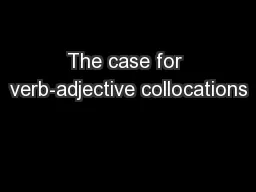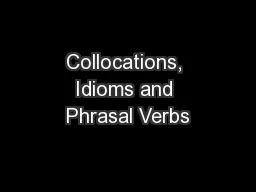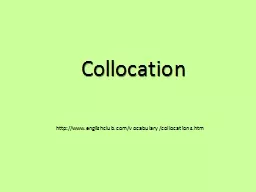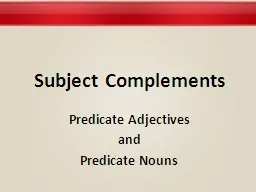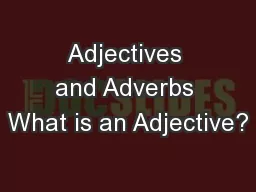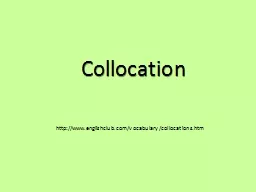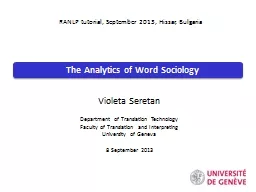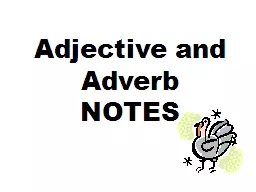PDF-The case for verb-adjective collocations
Author : tawny-fly | Published Date : 2016-08-03
2009 2010 The notion of selection as opposed to semantic selection is based on the observation that collocators predicates with potentially equivalent meanings have
Presentation Embed Code
Download Presentation
Download Presentation The PPT/PDF document "The case for verb-adjective collocations" is the property of its rightful owner. Permission is granted to download and print the materials on this website for personal, non-commercial use only, and to display it on your personal computer provided you do not modify the materials and that you retain all copyright notices contained in the materials. By downloading content from our website, you accept the terms of this agreement.
The case for verb-adjective collocations: Transcript
Download Rules Of Document
"The case for verb-adjective collocations"The content belongs to its owner. You may download and print it for personal use, without modification, and keep all copyright notices. By downloading, you agree to these terms.
Related Documents

